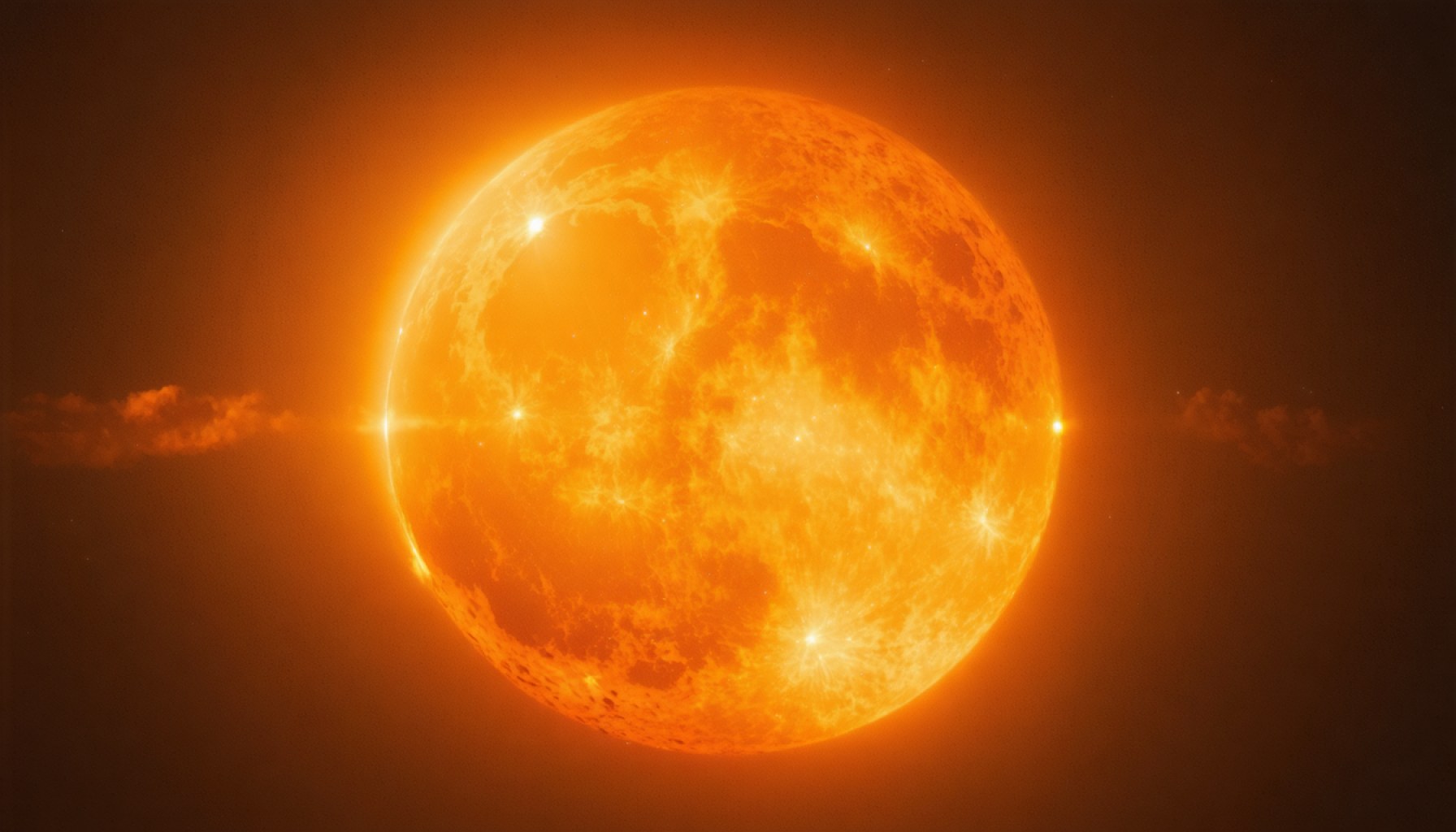- A partial solar eclipse will be visible in parts of the northern hemisphere, including western Europe, Greenland, north-west Africa, and north-east North America.
- Observers in Canada will see up to 90% of the sun obscured, while the UK will see 30% to 40% coverage, especially in Northern Ireland and Scotland.
- The eclipse will be visible in London from 10:07 a.m., peaking at 11:03 a.m., and ending by noon.
- Safety is crucial; use solar eclipse glasses or a viewer, or create projections with household items like colanders or pinhole papers.
- The event highlights the subtle beauty of partial eclipses, inviting deliberate observation rather than casual viewing.
- Looking ahead, a total solar eclipse will occur in August 2026, visible in parts of Europe, including Spain and Ibiza.
The sky is set to dazzle as a partial solar eclipse graces parts of the northern hemisphere this Saturday. Casting a mystical twilight, the phenomenon pulls the moon into a graceful alignment with the Earth and sun, showcasing the celestial choreography of our universe. Unlike its dramatic cousin—the total solar eclipse—this event only partially cloaks the sun, carving a luminous crescent against the sky.
Nature’s ethereal display will unfold over vast regions. Those in western Europe, Greenland, north-west Africa, and north-east North America will catch glimpses of this cosmic ballet. Observers in Canada, in particular, will witness up to 90% of the sun’s radiant face gently obscured—a spectacle sure to captivate onlookers.
The United Kingdom won’t be left in the shadows either. Expected to cover 30% to 40% of the sun, the eclipse is anticipated to be most pronounced in the north-western territories, including parts of Northern Ireland and Scotland. Enthusiasts can look forward to clear skies promising an unobstructed event, although extreme darkness—a hallmark of total eclipses—will not descend. It’s a reminder of the subtlety inherent in a partial eclipse, requiring deliberate observation rather than casual.
Timing is everything to witness this celestial moment: in London, keep your eyes peeled from 10:07 a.m., as the moon gradually sails across the sun, peaking at 11:03 a.m., and concluding by noon.
To savor this experience safely, equip yourself with solar eclipse glasses or a solar viewer to protect your eyes. For those without specialized gear, creativity offers an alternative: transform your kitchen colander, or a paper with a pinhole, into a projection tool that casts the eclipse onto a surface, simulating a cosmic nibble on our sun. Even nature aids our view—the sun’s rays filtering through the leaves can cast shadowy crescents onto the ground.
As we gaze upward, the spectacle also turns our thoughts to the future. For those yearning to feel the full power of totality again, set your sights on August 2026. Portions of Europe, notably parts of Spain and Ibiza, will revel in the complete solar blackout. Until then, Saturday’s partial eclipse stands as a gentle reminder of our position in the universe and the perpetual waltz of celestial bodies above.
Don’t Miss the Celestial Show: What You Need to Know About the Upcoming Partial Solar Eclipse
Additional Facts and Insights on the Partial Solar Eclipse
A partial solar eclipse is a captivating astronomical event that allows us to witness the intricate workings of our universe. While the source article highlights the basics, let’s delve deeper into the subject to enhance your understanding and viewing experience.
What is a Partial Solar Eclipse?
In a partial solar eclipse, the moon covers a portion of the sun, unlike a total solar eclipse, where the moon completely obscures the sun. This interaction creates a unique celestial display, revealing a crescent shape of the sun.
Key Viewing Locations
1. Western Europe: Particularly prominent in the UK, where observers can experience 30% to 40% obscuration.
2. Northern Europe: Exceptional views in parts of Greenland.
3. Northwest Africa: Select regions will enjoy the spectacle.
4. Northeastern North America: Canadian observers could see up to 90% of the sun covered.
How to Safely Watch the Eclipse
1. Use Protective Gear: Solar eclipse glasses or viewers are essential to prevent eye damage.
2. DIY Viewing Tools: Create a pinhole projector using cardboard or utilize a colander to project the eclipse onto a flat surface.
3. Nature’s Aid: Look for crescent-shaped shadows under trees during the eclipse.
Real-World Use Cases
Solar eclipses historically have been used for scientific research, such as studying the sun’s corona and testing general relativity. Today, eclipses also inspire educational activities and community gatherings.
Market Trends and Predictions
Interest in solar eclipses often boosts sales in specialized viewing equipment, such as eclipse glasses and telescopes. With the total eclipse anticipated in August 2026, markets might see an upsurge in related products.
Controversies & Limitations
One common misconception is that ordinary sunglasses can protect your eyes during an eclipse. This is false; only certified eclipse glasses offer adequate protection. Also, weather conditions can limit visibility, emphasizing the importance of checking local forecasts.
Upcoming Eclipses
Mark your calendars for a total solar eclipse on August 12, 2026, where parts of Europe, particularly Spain and Ibiza, will enjoy the spectacular event.
Actionable Tips
– Plan Ahead: Determine the best viewing time and location based on your geography.
– Get Gear: Purchase certified eclipse glasses early to avoid last-minute unavailability.
– Engage with Community: Join local astronomy clubs or public viewing events for guided experiences.
For more about engaging with fascinating astronomical events and the science behind them, explore the NASA website.
Whether you’re an avid sky gazer or a curious onlooker, these insights prepare you to fully appreciate the beauty and wonder of the partial solar eclipse.
